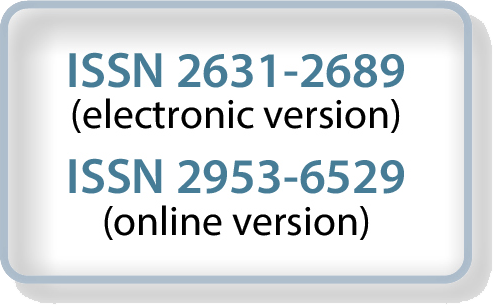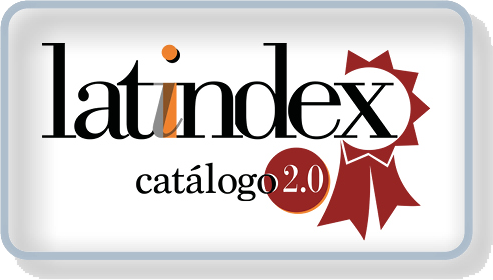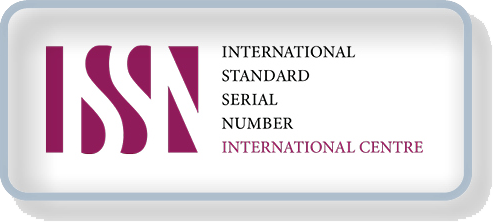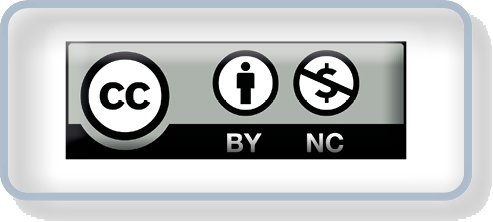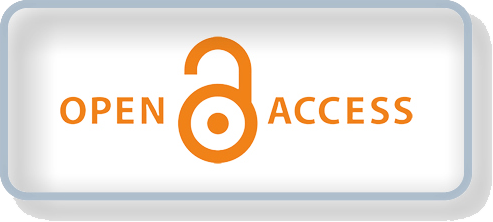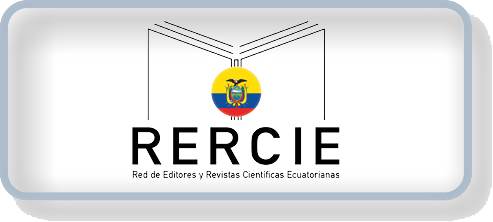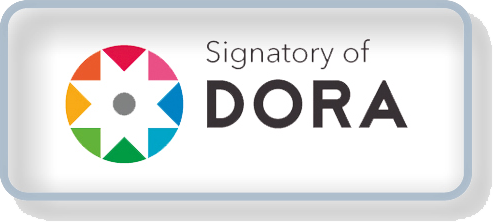Submissions
Submission Preparation Checklist
All submissions must meet the following requirements.
- The submission has not been previously published or considered by any other journal (or an explanation has been provided in the Comments to the Editor).
- Full metadata registration of all collaborators.
- The submission file is in Microsoft Word (preferred) or Word Perfect format, editable, without access passwords.
- A statement certifying the authorship and originality of the work has been attached (https://www.manglareditores.com/convocatoria-un-espacio-para-la-ciencia).
- The work adheres to the selected type of contribution (Original Scientific Investigations, Critical Analysis Articles, Literature Reviews, Case Studies, Theoretical Articles, Professional Experience Systematization).
- The text is line-spaced at one and a half (1.5); uses 12-point Times New Roman font; italics are used instead of underlining (except for URLs); and all figures and tables are placed within the body of the text at appropriate locations, rather than at the end.
- The manuscript complies with the formatting and bibliographic requirements outlined in the Author Guidelines, which can be found in the Directrices del autor/a section.
- The number of authors is appropriate for the type of manuscript and complies with the provided justifications.
- I declare that I have read and accepted the Policy on the Use of Generative Artificial Intelligence of the journal, and that I have clearly specified in the manuscript whether any AI tools were used and for what purpose. (See policy at: https://www.revistas-manglareditores.org/index.php/espacio-para-la-ciencia/politica-uso-IA)
- Provide the URL links for references, ensuring they are active and accessible.
Administrative, Financial and Economic Sciences
At Un Espacio Para La Ciencia, we are committed to fostering excellence and integrity in academic research. To maintain and promote high academic and scientific standards, we establish the following general policy applicable to all sections and thematic areas:
- Originality and Contribution to Knowledge: All submitted works must be original and significantly contribute to the corresponding field of study. Authors are expected to provide novel perspectives, innovative approaches, and research results that advance knowledge in their specific area. Manuscripts must be free from plagiarism and not under consideration for publication elsewhere.
- Authorship and Responsibility: Authorship should accurately reflect each individual’s contribution to the work. All authors are expected to assume responsibility for the content of the manuscript. Any conflicts of interest or relevant information about research funding should be clearly declared.
- Adherence to Thematic Sublines: The specific sublines for each section are presented below. Authors should consider these sublines as a guide for their writings and ensure that their work aligns with the highlighted themes and approaches. Manuscripts are expected to clearly reflect how they relate to one or more of these sublines. Both the main line and the subline should be placed in the submitted work, following the keywords.
Thematic Sublines:
- Business Management and Leadership
- Innovation and Entrepreneurship
- International Economics and Trade
- Corporate Finance and Capital Markets
- Corporate Social Responsibility and Business Ethics
- Economic Growth without Exclusion
- Productive Capabilities and Environment
- Sustainable Production and Consumption
- Inclusive and Democratic Economy
- Creation, Activation, Development, and Transformation of the Social and Solidarity Economy's Productive Fabric
- Social Responsibility and Sustainability of Companies
- Human Resources Management
- Socio-Environmental Responsibility
- Dynamics of Control and Management of Productive Processes
- Processes of Extraction and Responsible Commercialization of Natural Resources
- Relations between the Financial Market and Social Dynamics
Social and Human Sciences
At Un Espacio Para La Ciencia, we are committed to fostering excellence and integrity in academic research. To maintain and promote high academic and scientific standards, we establish the following general policy applicable to all sections and thematic areas:
- Originality and Contribution to Knowledge: All submitted works must be original and significantly contribute to the corresponding field of study. Authors are expected to provide novel perspectives, innovative approaches, and research results that advance knowledge in their specific area. Manuscripts must be free from plagiarism and not under consideration for publication elsewhere.
- Authorship and Responsibility: Authorship should accurately reflect each individual’s contribution to the work. All authors are expected to assume responsibility for the content of the manuscript. Any conflicts of interest or relevant information about research funding should be clearly declared.
- Adherence to Thematic Sublines: The specific sublines for each section are presented below. Authors should consider these sublines as a guide for their writings and ensure that their work aligns with the highlighted themes and approaches. Manuscripts are expected to clearly reflect how they relate to one or more of these sublines. Both the main line and the subline should be placed in the submitted work, following the keywords.
Thematic Sublines:
1. Social psychology and human behavior
2. Cultural studies and diversity
3. Contemporary history and regional studies
4. Philosophy and critical theory
5. Social anthropology and ethnographic studies
6. Inclusive teacher policies and training
7. Innovative inclusive education practices and their promotion
8. Process of professionalization of women
9. Resilience, productivity and education
10. Educational management
11. Cities, politics and peace
Education Science
At Un Espacio Para La Ciencia, we are committed to fostering excellence and integrity in academic research. To maintain and promote high academic and scientific standards, we establish the following general policy applicable to all sections and thematic areas:
- Originality and Contribution to Knowledge: All submitted works must be original and significantly contribute to the corresponding field of study. Authors are expected to provide novel perspectives, innovative approaches, and research results that advance knowledge in their specific area. Manuscripts must be free from plagiarism and not under consideration for publication elsewhere.
- Authorship and Responsibility: Authorship should accurately reflect each individual’s contribution to the work. All authors are expected to assume responsibility for the content of the manuscript. Any conflicts of interest or relevant information about research funding should be clearly declared.
- Adherence to Thematic Sublines: The specific sublines for each section are presented below. Authors should consider these sublines as a guide for their writing and ensure that their work aligns with the highlighted themes and approaches. Manuscripts are expected to clearly reflect how they relate to one or more of these sublines. Both the main line and the subline should be placed in the submitted work, following the keywords.
Thematic Sublines:
1. Pedagogy and didactics
2. Educational technologies and digital learning
3. Inclusive education and diversity
4. Educational policies and reforms
5. Educational evaluation and academic performance
6. Training and professional development of Teachers
7. Curriculum and instructional design
8. Educational Psychology and cognitive development
9. Sociology of Education
10. Emerging trends in education
Information and communication technologies
At Un Espacio Para La Ciencia, we are committed to fostering excellence and integrity in academic research. To maintain and promote high academic and scientific standards, we establish the following general policy applicable to all sections and thematic areas:
- Originality and Contribution to Knowledge: All submitted works must be original and significantly contribute to the corresponding field of study. Authors are expected to provide novel perspectives, innovative approaches, and research results that advance knowledge in their specific area. Manuscripts must be free from plagiarism and not under consideration for publication elsewhere.
- Authorship and Responsibility: Authorship should accurately reflect each individual’s contribution to the work. All authors are expected to assume responsibility for the content of the manuscript. Any conflicts of interest or relevant information about research funding should be clearly declared.
- Adherence to Thematic Sublines: The specific sublines for each section are presented below. Authors should consider these sublines as a guide for their writing and ensure that their work aligns with the highlighted themes and approaches. Manuscripts are expected to clearly reflect how they relate to one or more of these sublines. Both the main line and the subline should be placed in the submitted work, following the keywords.
Thematic Sublines:
- Artificial intelligence and machine learning
- Cybersecurity and data privacy
- Networks and communications
- Software and mobile application development
- Big Data and data analysis
- Emerging and converging technologies
- Cloud computing and cloud-based services
- Human-Computer Interaction
- Social and Economic Impact of ICT
- ICT and Sustainability
- ICT in Health
- Education and ICT
- ICT in Art and Culture
- Ethics and Legislation in ICT
- Software and digital tools for research
Innovation
At Un Espacio Para La Ciencia, we are committed to fostering excellence and integrity in academic research. To maintain and promote high academic and scientific standards, we establish the following general policy applicable to all sections and thematic areas:
- Originality and Contribution to Knowledge: All submitted works must be original and significantly contribute to the corresponding field of study. Authors are expected to provide novel perspectives, innovative approaches, and research results that advance knowledge in their specific area. Manuscripts must be free from plagiarism and not under consideration for publication elsewhere.
- Authorship and Responsibility: Authorship should accurately reflect each individual’s contribution to the work. All authors are expected to assume responsibility for the content of the manuscript. Any conflicts of interest or relevant information about research funding should be clearly declared.
- Adherence to Thematic Sublines: The specific sublines for each section are presented below. Authors should consider these sublines as a guide for their writing and ensure that their work aligns with the highlighted themes and approaches. Manuscripts are expected to clearly reflect how they relate to one or more of these sublines. Both the main line and the subline should be placed in the submitted work, following the keywords.
Thematic Sublines:
1. Technological innovation and development
2. Innovation management in organizations
3. Sustainability and green innovation
4. Innovation in health and biotechnology
5. Innovative business models
6. Social innovation and cultural change
7. Educational innovation
8. Innovation in the creative industries
9. Innovation in energy and environment
10. Innovation in agriculture and food
11. Innovation in public policies
12. Innovation in trade and logistics
13. Digital innovation and digital transformation
14. Ethics and innovation
Deontology
At Un Espacio Para La Ciencia, we are committed to fostering excellence and integrity in academic research. To maintain and promote high academic and scientific standards, we establish the following general policy applicable to all sections and thematic areas:
- Originality and Contribution to Knowledge: All submitted works must be original and significantly contribute to the corresponding field of study. Authors are expected to provide novel perspectives, innovative approaches, and research results that advance knowledge in their specific area. Manuscripts must be free from plagiarism and not under consideration for publication elsewhere.
- Authorship and Responsibility: Authorship should accurately reflect each individual’s contribution to the work. All authors are expected to assume responsibility for the content of the manuscript. Any conflicts of interest or relevant information about research funding should be clearly declared.
- Adherence to Thematic Sublines: The specific sublines for each section are presented below. Authors should consider these sublines as a guide for their writing and ensure that their work aligns with the highlighted themes and approaches. Manuscripts are expected to clearly reflect how they relate to one or more of these sublines. Both the main line and the subline should be placed in the submitted work, following the keywords.
Thematic Sublines:
1. Professional ethics and responsibility
2. Ethics in research and academia
3. Deontology in the health sciences
4. Ethics in technology and artificial intelligence
5. Ethics in communication and media
6. Environmental ethics and sustainability
7. Ethics in business management
8. Ethics and human rights
9. Ethics in education
10. Ethics in art and culture
11. Ethics in politics and governance
12. Ethics in international relations
13. Ethics and legality
14. Ethics in innovation and scientific research
Research
At Un Espacio Para La Ciencia, we are committed to fostering excellence and integrity in academic research. To maintain and promote high academic and scientific standards, we establish the following general policy applicable to all sections and thematic areas:
- Originality and Contribution to Knowledge: All submitted works must be original and significantly contribute to the corresponding field of study. Authors are expected to provide novel perspectives, innovative approaches, and research results that advance knowledge in their specific area. Manuscripts must be free from plagiarism and not under consideration for publication elsewhere.
- Authorship and Responsibility: Authorship should accurately reflect each individual’s contribution to the work. All authors are expected to assume responsibility for the content of the manuscript. Any conflicts of interest or relevant information about research funding should be clearly declared.
- Adherence to Thematic Sublines: The specific sublines for each section are presented below. Authors should consider these sublines as a guide for their writing and ensure that their work aligns with the highlighted themes and approaches. Manuscripts are expected to clearly reflect how they relate to one or more of these sublines. Both the main line and the subline should be placed in the submitted work, following the keywords.
Thematic Sublines:
1. Qualitative, quantitative and mixed research methodologies
2. Innovation in research techniques and tools
3. Ethics and responsibility in research
4. Interdisciplinary and transdisciplinary research
5. Publication and dissemination of research results
6. Impact and application of research
7. Research in emerging technologies
8. Research in social sciences and humanities
9. Research in health sciences
10. Research in environmental sciences and sustainability
11. Educational research
12. Research in economics and business
13. Collaboration and research networks
14. Research evaluation and funding
15. Use of software and digital tools in research
Copyright Notice
Un Espacio para la Ciencia is licensed under a Creative Commons Attribution-NonCommercial 4.0 International license (CC BY-NC 4.0). This license allows reusers to distribute, remix, adapt, and build on the material in any medium or format for non-commercial purposes only, and only as long as attribution is given to the creator.
A Space for Science is an OpenAccess publication, by virtue of ManglarEditores' adherence to the San Francisco Declaration on Research Evaluation (DORA), therefore no registration, subscription or payment is required to access the academic material -scientist who publishes, which have been subjected to evaluation under the double blind peer review methodology.
Privacy Statement
1. Introduction. At Un Espacio para la Ciencia, we value the privacy of our academic community and are committed to safeguarding the information entrusted to us. This Privacy Statement explains how we collect, use, protect, and share personal information on our OJS (Open Journal Systems) platform.
2. Information Collection. We only gather personal information essential for the operation of the OJS, including names, academic affiliations, email addresses, and other data pertinent to the publication and review of manuscripts.
3. Consent When Submitting Manuscripts. By submitting a manuscript through the OJS, the author or authors acknowledge and consent to this Privacy Statement. It's the primary author's responsibility to ensure all co-authors are informed and agree with the content of this declaration.
4. Use of Information. The collected information is exclusively used to:
- Manage the editorial and review process.
- Communicate with authors, reviewers, and editors.
- Notify about updates or changes to our platform and services.
We do not use the information for commercial purposes nor send unsolicited emails.
5. Sharing and Disclosing Information. Personal information will not be shared with third parties, except when necessary for the editorial process or by legal requirement. Any disclosure is made in accordance with applicable laws and regulations.
6. User Rights. Users have the right to:
- Access, correct, or delete their personal information.
- Limit or object to the use of their data.
- Withdraw their consent at any time.
- File a complaint with a supervisory authority.
7. Changes to the Privacy Statement. We may occasionally update this Privacy Statement. In the event of significant changes, we will inform our community via notifications on our platform or by email.
8. Contact. If you have questions or concerns about this Privacy Statement or the use of your personal information, please contact us at ueplc@manglareditores.com.







